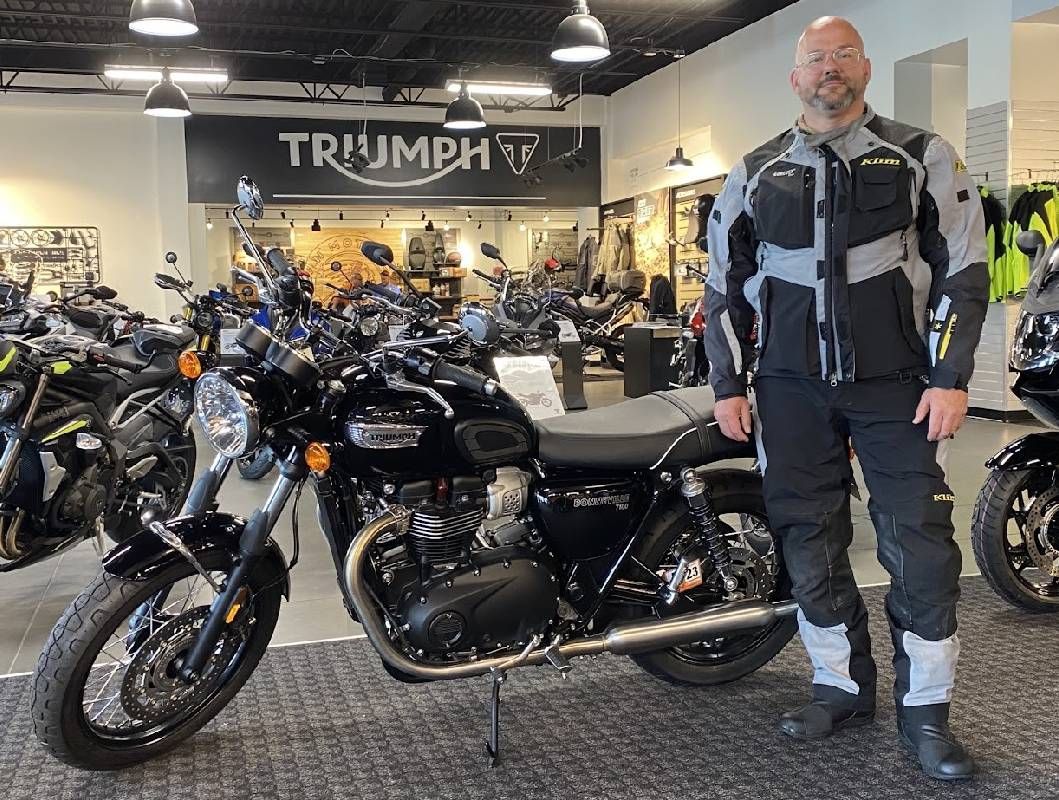Never Too Old to Ride
The median age of motorcycle owners is now 50 and climbing as boomers keep looking for adventure and whatever comes their way
Baby boomers, a generation raised on the excitement and adventure of movies like "Easy Rider" and "On Any Sunday," are not giving up on motorcycles as they age. For the first time ever, the median age of motorcycle owners in the U.S. is now 50, compared with just 27 in 1982, according to the Motorcycle Industry Council.

Hitting the road on your favorite bike is far different when you are nearing 60 than it was when you were still in your 20s. Older bodies respond differently to fatigue, temperature and other factors. Choosing the right bike, safety gear and accessories, along with good planning, will allow you to prolong your love of motorcycles well into your golden years.
Motorcycles have come a long way since the days of James Dean and his trusty Triumph Trophy. With the increased popularity of motorcycling and multiple manufacturers, choosing a new bike can be a lengthy process. As you age, one of the considerations you may have is whether or not to stay with two wheels or move to three.
Choosing the right motorcycle is crucial. Comfort is a primary consideration since you'll ride for hours at a time.
There are many factory-made three-wheeled motorcycles, or "trikes." Harley Davidson sells a model based on its premium touring bikes. Can-Am produces multiple configurations of its popular three-wheelers, including the Spyder and Ryker. Even Yamaha entered the three-wheeled market with its Niken, a novel design that can negotiate corners at higher speed than regular bikes.
Motorcycles styles have changed over the years. There are several categories, such as sport bikes, cruisers and dual sport models designed for both on- and off-road use. Dual sports have grown in popularity over the years and became more mainstream with the popularity of the "Long Way Round" series of TV programs capturing electric motorcycle trips around the world by the actor Ewan McGregor and his friend Charley Boorman.
Test Ride Before Buying
Choosing the right motorcycle is crucial. Comfort is a primary consideration since you'll ride for hours at a time. Some motorcycle dealers offer test rides before purchase, which can help you make an informed decision.
Renting a bike like the one you are considering purchasing will allow for a more extended test ride to ensure the bike is right for you. There are several motorcycle rental companies, including EagleRider from Harley Davidson. EagleShare is another option that offers options from multiple manufacturers, including BMW and Honda.
Accessories
The next step is to enhance your motorcycling experience by enhancing your motorcycle. You can choose from among the many accessories that promise to make your ride more enjoyable, including custom seats, handlebar risers and foot rests. Use them to tailor your riding position to your body and posture.
Being prepared for changes in weather conditions can mean the difference between an enjoyable ride and a miserable slog.
Motorcycle travel also requires some means of luggage storage. Saddlebags are common on cruisers, and cases that mount behind the rider or on the gas tank may be used on most bikes. Options range from less expensive soft side bags to higher-end hard cases. Weatherproofing is another option.
You also may choose from among electronic accessories such as GPS units for navigating and wireless connections to communicate with other riders, listen to music or talk on the phone.
Take a Ride, Rain or Shine
Consider the weather when choosing accessories. Being prepared for changes in weather conditions can mean the difference between an enjoyable ride and a miserable slog. As we age, our bodies become more sensitive to temperature changes. Heated gloves, jackets, liners, pants and other gear allow you to ride comfortably well into winter.
Summer riding can be made more comfortable by wearing clothes made with mesh or other material that improves airflow. Rain is another challenge. Waterproof outerwear can keep you dry if you encounter a common summertime pop-up storm. Pricier riding garments made with Gore-Tex are waterproof and breathable, a good combination in summer.
Safety First
Helmets come in different styles. Open-face helmets are popular among those riding cruisers, while full-face helmets are often seen on sport bike riders. Each provides different levels of protection and holds unique standard certifications. Open-face helmets are rated based on the Department of Transportation (DOT) standard. Many riders consider it to be the minimum level of protection for a helmet, and some states require the use of DOT helmets for all motorcycle riders and passengers. Full-face helmets offer improved protection by covering more area, including the chin.
Some riders shy away from full-face helmets due to perceptions of increased heat and discomfort. Modern full-face options have advanced ventilation systems that allow riders to stay cool and safe at the same time. Full-face helmets also tend to be more expensive than their open-face counterparts.
Rider training is another way to stay safe on the road. The Motorcycle Safety Foundation (MSF) offers multiple options. The Basic RiderCourse is commonly required to obtain motorcycle endorsements from state departments of motor vehicles.
Joey "JD" Redmon, a retired motor officer and owner of Ride Like a Pro North Carolina, said regular rider training is important to rider safety. He provides an advanced course based on training required annually for motor officers, as police officers on motorcycles are known.
According to Redmon, the advanced techniques he teaches should be practiced regularly. He also encourages students to use safety gear, including DOT-approved helmets, motorcycle riding gloves, over-the-ankle boots, long jeans or riding pants and long sleeve shirts or jackets.
Planning a Ride
In our younger riding days, taking off on an adventure with no particular place to go may have been common. As we grow older, we need to plan our travels to ensure our safety and enjoyment. Our eyesight — particularly night vision — declines over time. When planning a trip, anticipate when visibility may be decreased. It helps to map out potential sleeping accommodations in advance. Whether you prefer hotels or campgrounds, having several options is handy.
Schedule adequate rest stops during the day and allow time for a good night's sleep. If fatigue starts to set in while riding, stop and rest.
Weather can be unpredictable, and you may end the riding day early if you encounter inclement conditions. Be sure to dress in layers or have other clothing available, as temperatures will fluctuate throughout the day, particularly if you ride in the mountains.
In hot weather, dehydration becomes a concern. Travel with water bottles or hydration packs. Many such packs have a hose that can be routed directly to the rider's mouth, allowing them to drink without pulling over.
Fatigue is another consideration for older adults. Schedule adequate rest stops during the day and allow time for a good night's sleep. If fatigue starts to set in while riding, stop and rest. Pushing yourself into further fatigue will decrease your reaction time and increase the risk of crash and injury.
Riding motorcycles does not have to end as we age. There are many two and three-wheeled options, and the right accessories, safety equipment, training and planning will help ensure many more miles of smiles. Remember that for motorcycle adventures, it's all about the journey and not the destination.


